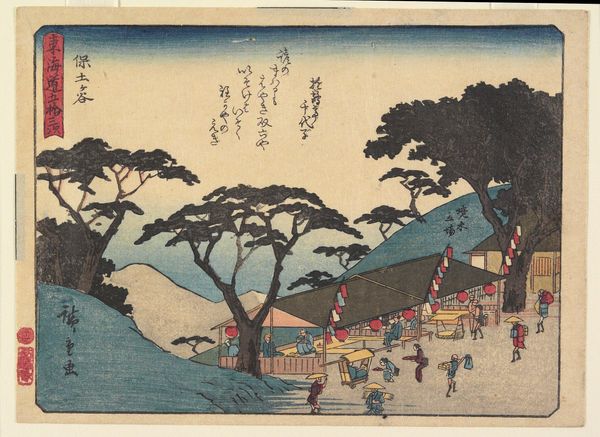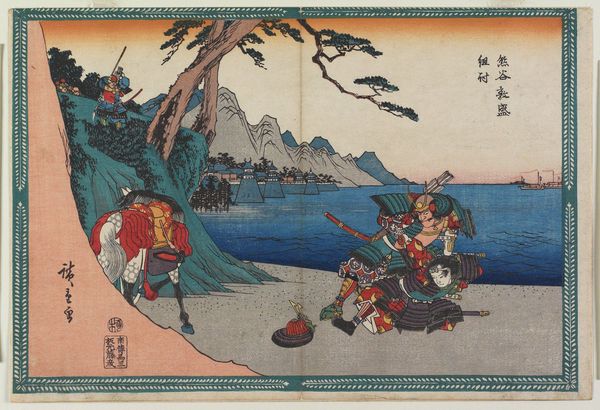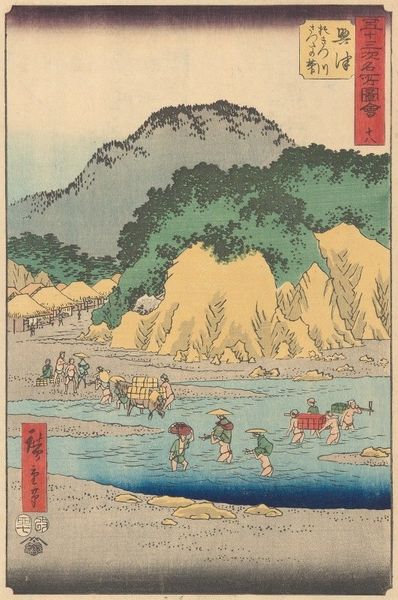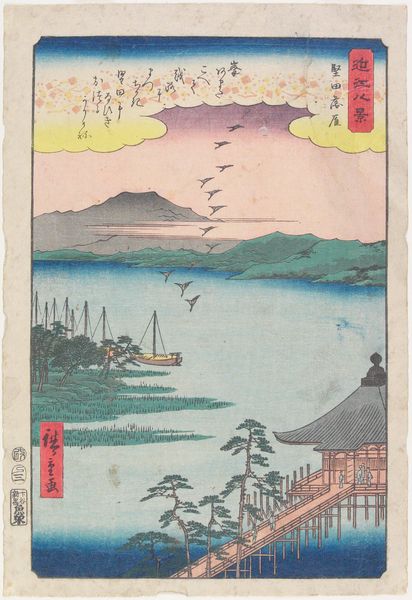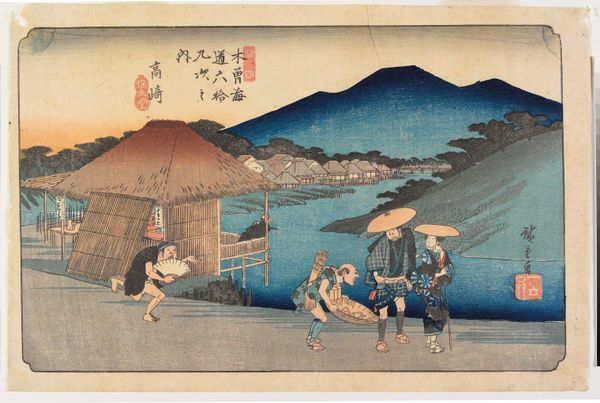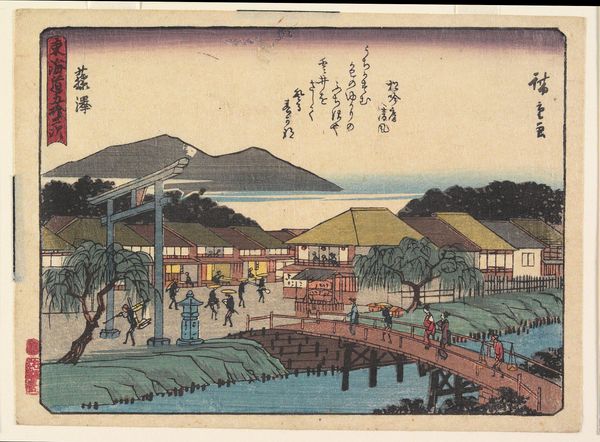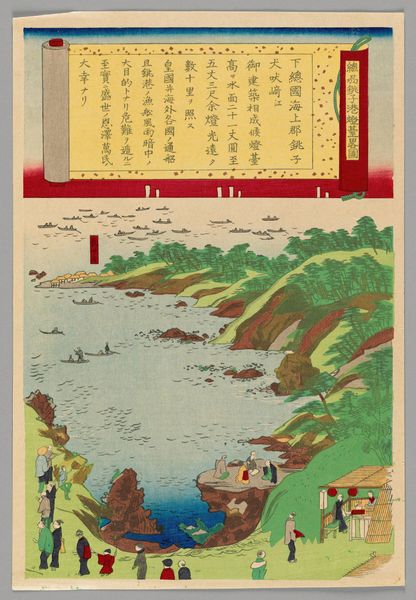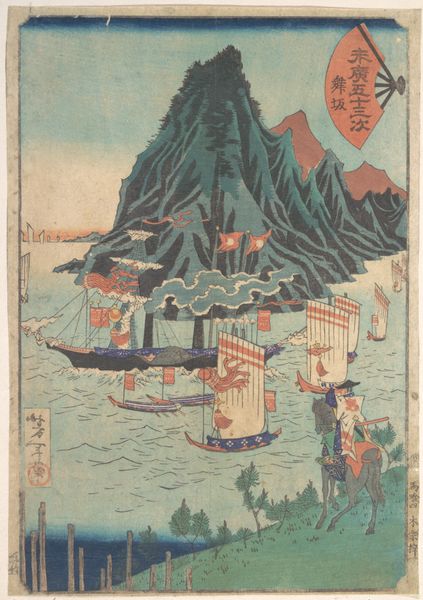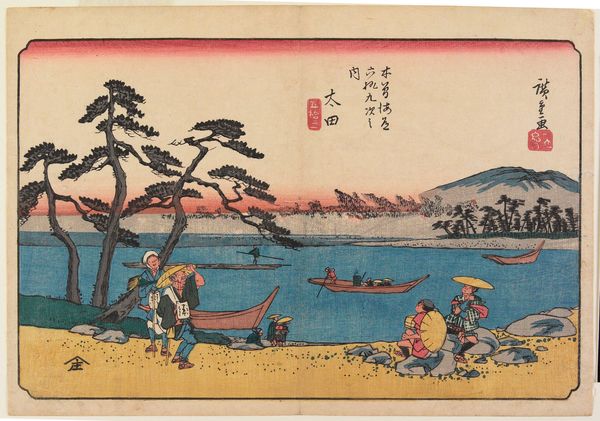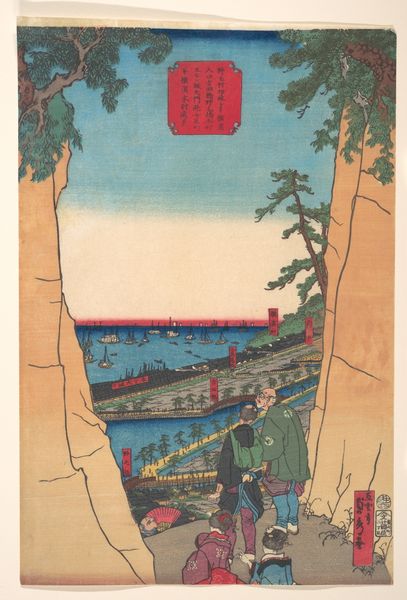
“View of Mount Tenpō in Osaka” (Naniwa Tempōzan fukei) 1836
0:00
0:00
print, woodblock-print
#
ink painting
# print
#
asian-art
#
landscape
#
ukiyo-e
#
japan
#
woodblock-print
#
mountain
#
orientalism
#
cityscape
Dimensions: Image (each): 14 1/8 × 10 in. (35.9 × 25.4 cm)
Copyright: Public Domain
Editor: Hasegawa Sadamasu's woodblock print, "View of Mount Tenpō in Osaka," created in 1836, feels remarkably contemporary despite its age. It’s busy, with people, boats, landscape—all vying for attention. What stories do you think the artist is trying to tell? Curator: Consider how the mountain, though ostensibly the subject, is pushed back, almost a backdrop to the throng of figures. The emotional weight isn't on nature's grandeur but on the human experience *within* that setting. Do you notice how each individual, rendered with distinct detail, contributes to a larger narrative of leisure and social gathering? Editor: Absolutely, it's like a snapshot of a festival or market day. Is it common for Japanese art to put people at the heart of landscape depictions like this? Curator: Indeed, in ukiyo-e prints, the landscape often serves as a stage for human activities. Mount Tenpō, in this instance, was an artificial hill created to provide a scenic viewpoint and was itself a product of human labor imposed on the land. What might the symbolism of an *artificial* mountain be, compared to a 'natural' one? Editor: Maybe it reflects a sense of control, or perhaps the idealization of nature by humans, even in how we frame it. I see cherry blossoms in bloom too, scattered among the crowds. Curator: Good eye. Blossoms are heavy with meaning in Japan: beauty, transience, and renewal, aren’t they? The artist subtly contrasts the ephemeral beauty of the blossoms with the enduring presence of the landscape, suggesting deeper cycles. This relates to the Buddhist concept of impermanence. Editor: That makes sense; the print's celebrating a moment but hinting at broader ideas. Curator: And how that moment ties into cultural memory and the continued relevance of certain spaces over time. Editor: I learned that seeing the bigger picture is important by studying art and culture. Curator: A picture is a worth a thousand words—or symbols—as they say.
Comments
No comments
Be the first to comment and join the conversation on the ultimate creative platform.
